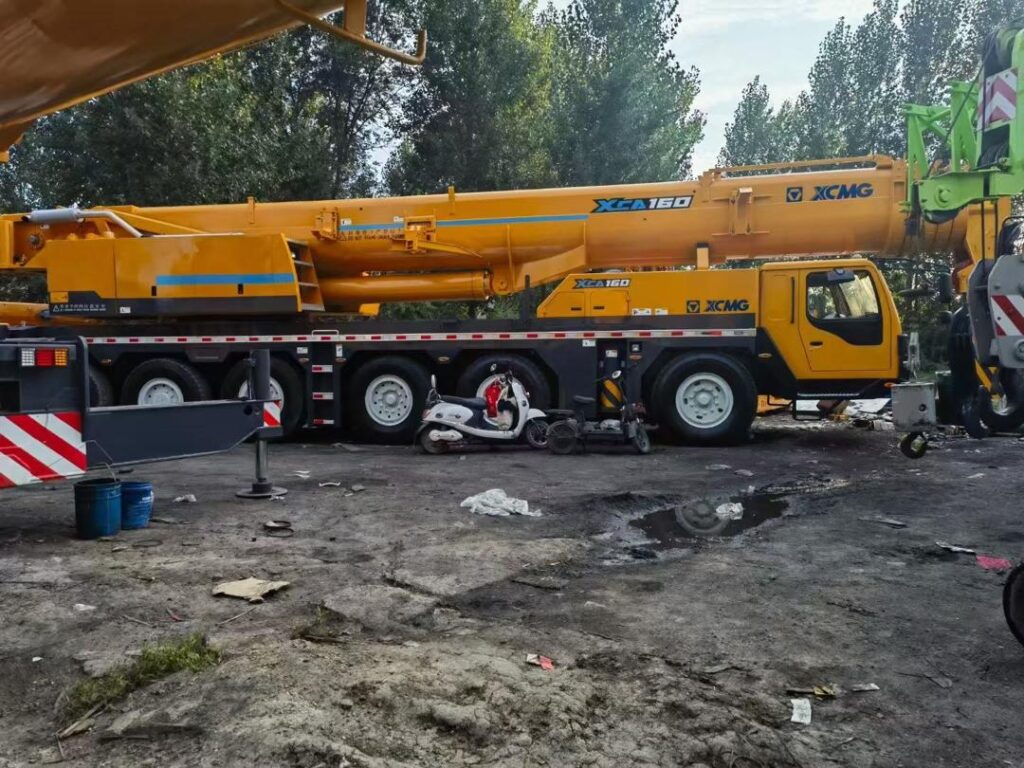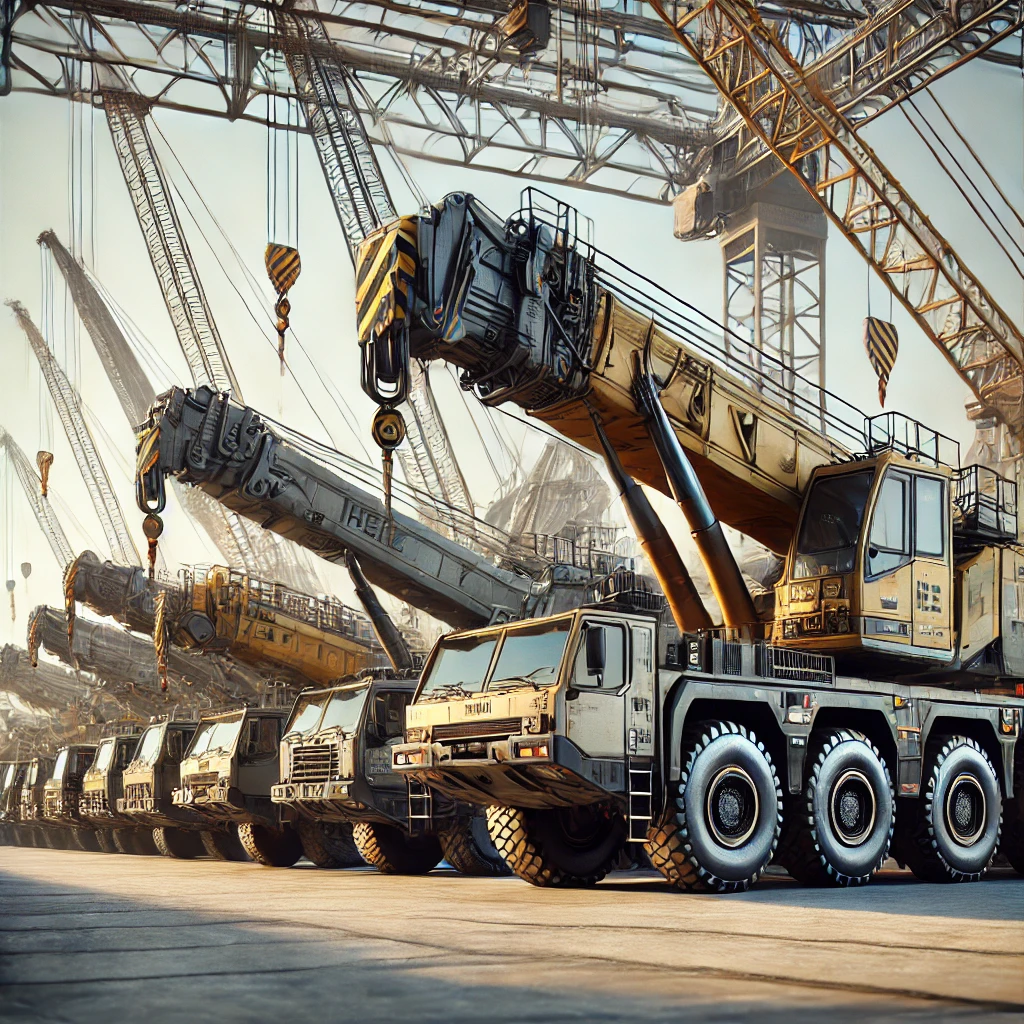Future Trends in the Crane Industry: What Lies Ahead?

The crane industry has been a cornerstone of construction, infrastructure, and heavy lifting for decades. As technology evolves, cranes are becoming smarter, safer, and more efficient. With advancements in automation, artificial intelligence (AI), and sustainability initiatives, the crane industry is experiencing a massive transformation. In this blog, we explore the future trends in the crane industry and how they will reshape construction and heavy lifting.
1. Automation and AI-Driven Cranes
Automation is one of the biggest technological shifts in the crane industry. AI and machine learning algorithms are enabling cranes to perform complex tasks with greater precision and reduced human intervention.
How AI is Transforming Cranes:
- Real-time Load Monitoring: AI-powered cranes analyze loads and adjust lifting techniques for better weight distribution.
- Automated Operations: Self-operating cranes reduce human errors, ensuring safer lifting operations.
- Predictive Maintenance: AI detects potential equipment failures before they happen, preventing costly breakdowns.
🚀 Example: Many companies are integrating AI-based collision avoidance systems that allow cranes to detect obstacles and prevent accidents.
2. Smart Cranes with IoT Integration
The Internet of Things (IoT) is playing a crucial role in enhancing crane efficiency. IoT-enabled cranes can connect to cloud-based systems, providing real-time insights into crane operations.
Benefits of IoT in Cranes:
- Remote Monitoring: Supervisors can track crane performance and movement from anywhere in the world.
- Enhanced Safety Measures: IoT sensors detect unsafe conditions like overloading or sudden movements.
- Data-Driven Decision Making: Predictive analytics help companies optimize crane usage for higher efficiency.
🔗 Read More: How IoT is Revolutionizing Heavy Equipment
3. Electrification & Green Energy Solutions
As the world moves towards sustainability, the crane industry is also adopting green energy solutions. Many manufacturers are developing electric and hybrid cranes to reduce emissions and comply with environmental regulations.
Future Green Crane Technologies:
- Battery-Powered Cranes: Reduce carbon footprint and lower operational costs.
- Hydrogen-Powered Cranes: A promising alternative to traditional diesel-powered cranes.
- Solar-Powered Cranes: Utilizing renewable energy sources for small-scale lifting operations.
🌍 Impact: Companies that embrace eco-friendly cranes will have a competitive edge in the future construction market.
4. Remote and Autonomous Crane Operations
With the rise of automation and remote control technology, cranes are becoming less dependent on manual operations. Teleoperated cranes allow operators to control lifting machinery from a distance, reducing workplace hazards.
Key Advancements:
- Virtual Reality (VR) Interfaces: Operators can control cranes from remote locations using VR simulation.
- Fully Autonomous Cranes: Advanced robotics enable cranes to lift and move materials without human intervention.
- AI-Based Safety Protocols: Machine-learning algorithms ensure cranes operate within optimal safety conditions.
🚧 Case Study: Some construction firms are testing drone-assisted crane operations, where drones provide real-time aerial monitoring for better load placement.
5. Modular and 3D-Printed Crane Components
The manufacturing process of cranes is also evolving. 3D printing technology is now being used to create lightweight, yet durable crane parts.
Why This Matters?
- Faster Production: 3D printing speeds up crane part manufacturing, reducing lead times.
- Customization: Companies can design customized crane parts tailored to specific project needs.
- Cost Efficiency: Reduces material waste and overall production costs.
🛠 Example: Some manufacturers are using modular crane components, allowing cranes to be assembled and disassembled quickly for easier transportation.
6. Increased Focus on Safety Innovations
Safety remains a top priority in the crane industry. New safety features are being developed to minimize accidents and improve worker protection.
Emerging Safety Innovations:
- Automated Emergency Brakes: Prevent uncontrolled crane movements in case of power failure.
- Wearable Safety Gear: Smart helmets and vests alert operators of potential hazards.
- AI-Based Surveillance: Cameras with AI integration detect unsafe working conditions in real time.
📉 Impact: Companies investing in safety technology see a 40% reduction in workplace accidents.
7. Digital Twin Technology for Crane Operations
A digital twin is a virtual replica of a physical crane that allows companies to simulate and optimize operations.
Benefits of Digital Twin Technology:
- Predictive Performance Analysis: Helps in understanding how a crane will perform under different conditions.
- Maintenance Optimization: Reduces downtime by identifying weak points before failure.
- Training & Simulation: New operators can practice in a risk-free virtual environment.
💡 Example: Companies are using AR (Augmented Reality) for digital crane training, enhancing operator skills without using real equipment.
8. The Rise of Rental & Leasing Models
More businesses are opting for crane rentals instead of purchasing new equipment. This shift is driven by:
- Lower upfront investment for companies that don’t require cranes permanently.
- Flexibility to upgrade to newer models without ownership risks.
- Reduced maintenance costs, as rentals come with service packages.
🔗 Explore: The Benefits of Renting a Crane vs Buying
9. Blockchain for Transparent Transactions
The use of blockchain technology in crane transactions is gaining traction, ensuring secure and transparent deals between buyers and sellers.
Advantages of Blockchain in Crane Sales:
- Tamper-Proof Equipment History: Buyers can verify a crane’s maintenance records.
- Smart Contracts: Secure and automated transactions reduce fraud.
- Global Trade Efficiency: Faster international transactions with verified documents.
💰 Future Outlook: As digital transactions grow, blockchain will play a crucial role in secure crane sales and rentals.
10. 5G Connectivity & Real-Time Data Sharing
5G technology is set to revolutionize crane communication and control. With ultra-fast connectivity, cranes will be able to exchange real-time data for more precise and synchronized operations.
Expected Benefits:
- Seamless Remote Operation
- Faster Response Time for Safety Alerts
- Better Integration with AI and IoT Systems
📡 Industry Impact: Construction sites will become more connected and efficient, reducing project delays.
Conclusion
The crane industry is undergoing a major transformation with automation, AI, green energy, and digitalization leading the way. Companies that adapt to these trends will gain a competitive advantage in an increasingly high-tech construction world.
As cranes become smarter, safer, and more sustainable, the future of lifting and heavy machinery is brighter than ever.
🚀 Stay ahead of the game—embrace the future of cranes today!










